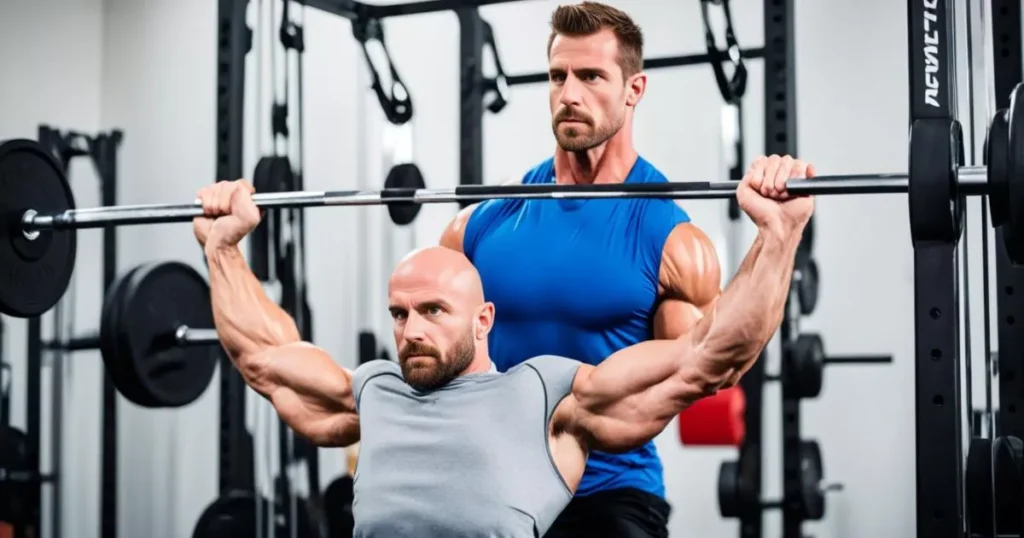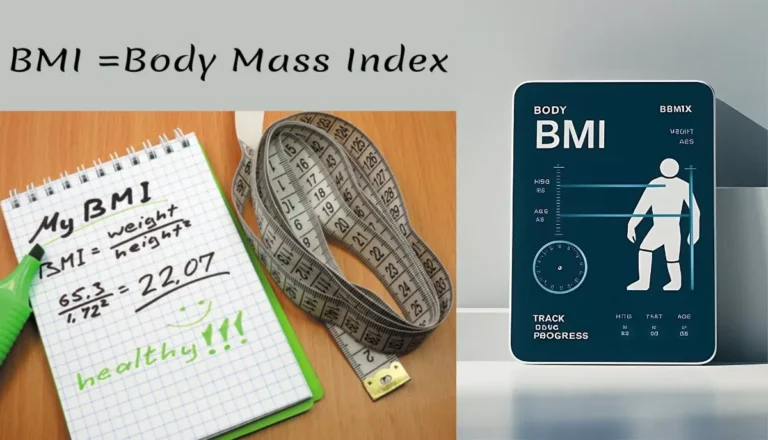Disclaimer: I have affiliate links in this post and receive a commission on any purchases you make at no cost to you. It’s one of the ways I support my site.
Did you know that resistance training can boost your resting metabolic rate by up to 140 calories daily for men and 50 calories for women? This shows how crucial strength training is for your fitness plan, especially if you’re trying to lose weight. Mixing cardio with resistance training can lead to better long-term results.
The Centers for Disease Control and Prevention (CDC) suggests aerobic and resistance exercises for weight loss. Do them at least twice a week. Combining different workouts improves your body composition and metabolic health. Knowing the importance of resistance training helps you plan your fitness and nutrition. It will ensure you reach your weight loss goals.
Introduction to Resistance Training
Resistance training is about exercises that make your muscles stronger and bigger. It uses things like weights or machines to help you get better. This resistance training-introduction will show you different ways to get fit, no matter your current level.
There are many ways to do resistance training. You can lift weights, do bodyweight exercises, use resistance bands, or go to the gym. Each method has its benefits and helps you stay fit in different ways. It works by making your muscles work harder, which enables you to move better and keeps you from losing muscle as you get older.
Studies say doing 3-4 sets of exercises with 8-12 reps each helps grow your muscles. It also helps you burn more calories even when you’re not moving. Adding these forms of resistance training to your routine is key to staying healthy and strong over time.
The Role of Resistance Training in Weight Loss

Resistance training is key to losing weight effectively. It’s not just about burning calories during a workout. It helps create a strong base for weight loss by building muscle, which boosts your resting metabolic rate (RMR). Studies show that RMR makes up 60-75% of the energy you burn when you’re not moving.
This means having more muscle helps you burn fat over time.
Aerobic exercises focus on burning calories right away. But resistance training keeps burning calories even after you’re done working out. This makes it a powerful tool for losing weight in the long run.
To get the most out of resistance training, focus on big muscle groups and use multiple joints. Aim for six to ten reps in each set, doing three to four sets, two to three times a week. As you get stronger, increase the weight or intensity to keep building muscle and boosting your RMR.
Adding resistance training to a healthy diet can help you lose fat and improve your health. This approach not only helps with weight loss but also changes your body composition for the better. For those looking to lose weight, adding resistance training is crucial for a successful fitness journey.
How Resistance Training Can Help You
Resistance training is key for losing weight. It helps by increasing muscle mass and boosting your resting metabolic rate. Knowing how these work together can help you get the most out of your workouts.
Increasing Muscle Mass and Resting Metabolic Rate
Building muscle is crucial for managing weight. Muscle needs more energy than fat, which raises your resting metabolic rate (RMR). This means you burn more calories even when you’re not moving.
Adding resistance training to your routine helps build muscle and aids in losing fat. It’s important to keep muscle mass up as you age. After 30, you naturally lose 3–8% of muscle each decade.
The After-Burn Effect Explained
The after-burn effect, or excess post-exercise oxygen consumption (EPOC), boosts calorie burn. High-intensity resistance training keeps your body burning calories long after you finish working out. This is because the exercises keep your muscles active and your metabolism up.
Resistance training can greatly increase EPOC. This helps with fat loss and improves fitness levels.
| Factors | Impact on Muscle Mass | Impact on Resting Metabolic Rate |
|---|---|---|
| Resistance Training | Promotes muscle growth | Increases caloric burn during rest |
| Age | Muscle loss without intervention | Decreases if muscle mass is not preserved |
| Workout Intensity | Higher intensity enhances muscle engagement | Maximizes after-burn effect |
| Frequency | Two to three sessions lead to significant strength improvements | Regular training keeps metabolic rate elevated |
Key Benefits of Resistance Training

Resistance training has many benefits that go beyond just losing weight. It helps improve body composition by reducing fat and building lean muscle. This leads to better physical strength and boosts self-esteem, making you feel good about yourself.
Let’s look at how resistance training helps with body composition, strength, and heart health.
Improving Body Composition
Doing resistance training regularly can make your body better by cutting down fat and building muscle. Studies show that more muscle means you burn more calories even when you’re not moving. This leads to a better body shape and boosts your health.
Having a good body composition can make you feel more confident and happy with how you look.
Enhancing Strength and Endurance
Resistance training also makes you stronger and more able to keep going. It helps you do better in sports and everyday tasks, making life easier and safer. It also helps prevent injuries and keeps your muscles strong during long activities.
Supporting Cardiovascular Health
Many think resistance training is only for building muscle, but it’s also great for your heart. It can lower blood pressure and cholesterol, and improve blood flow. These are key to a healthy heart.
People who do resistance training have healthier hearts. This lowers the risk of heart disease, leading to better health overall.
Resistance Training vs. Cardiovascular Exercise

It’s key to know the differences between resistance training and cardiovascular exercise for weight loss. Both have their benefits, but they affect calorie burn and weight management in different ways. Let’s look at how they compare in terms of calories burned and long-term weight control.
Calorie Burn Comparison
Cardio exercises burn more calories during the activity than resistance training. For instance, running for 20 minutes can burn a lot of energy. On the other hand, strength training doesn’t burn calories as quickly but helps build muscle over time.
This muscle growth means you burn more calories even when you’re not working out. This is because your body needs more energy to keep your muscles active.
Studies show mixing both types of exercises is best for getting the most out of your workouts. This mix helps with both immediate calorie burning and keeping weight off over time. Adding various exercises to your routine can also make healthy habits stick, boosting your overall health.
Long-Term Weight Management
Building muscle with resistance training is crucial for keeping weight off long-term. The more muscle you have, the higher your metabolism stays, which helps with weight control. Research confirms that adding resistance workouts helps with losing weight and keeping it off.
As you get stronger, your body uses energy more efficiently, which is good for your health. Combining strength training with cardio offers a well-rounded plan for losing weight and keeping it off. This balanced approach helps you reach and keep your weight loss goals.
Effective Resistance Training Exercises for Weight Loss

Resistance training is key for losing weight. Using workouts that focus on compound movements can help. This part talks about the benefits of multi-joint exercises and using free weights and resistance bands for different training options.
Importance of Compound Movements
Compound movements are vital for burning calories during workouts. Moves like squats, deadlifts, bench presses, pull-ups, and push-ups work many muscles at once. This not only builds lean muscle but also increases the after-burn effect or EPOC.
Experts suggest doing three to six sets of six to twelve reps at 50-85% of one repetition maximum (1 RM). This approach boosts muscle strength and helps with fat loss.
Utilizing Free Weights and Resistance Bands
Free weights and resistance bands offer flexible training options. They let people adjust exercises based on their fitness level and space. Free weights, like dumbbells and kettlebells, work many muscles together. Resistance bands focus on muscle endurance and stability.
This mix of tools adds variety to workouts and keeps training intensity high. This is key for losing weight effectively.
| Exercise | Target Muscle Groups | Equipment Used | Suggested Sets | Suggested Repetitions |
|---|---|---|---|---|
| Squats | Quads, Hamstrings, Glutes | Free Weights or Bodyweight | 3-6 | 6-12 |
| Deadlifts | Lower Back, Hamstrings, Glutes | Free Weights | 3-6 | 6-12 |
| Bench Press | Chest, Shoulders, Triceps | Free Weights | 3-6 | 6-12 |
| Pull-Ups | Back, Biceps | Bodyweight | 3-6 | 6-12 |
| Push-Ups | Chest, Shoulders, Triceps | Bodyweight | 3-6 | 6-12 |
Resistance Training for Beginners

Starting resistance training can seem tough for newbies. Bodyweight exercises are a great way to begin. They help build strength without needing special gear. Simple moves like push-ups and squats are easy to do and keep you safe while you build confidence.
Starting with Bodyweight Exercises
Bodyweight exercises are perfect for fitness newbies. They help you learn how to move right and build strength. You don’t need any special gear, making them easy and effective.
- Push-ups: Targeting the chest, shoulders, and triceps.
- Squats: Engaging the legs and glutes.
- Planks: Strengthening the core.
Adding these exercises to your routine is a solid start. Doing 2 to 3 sets of 8 to 12 reps can help you get stronger and more fit over time.
Progressing to Weights and Machines
When you’re ready, you can move on to weights and gym machines. It’s important to pick the right weight. Start with weights that let you keep good form while doing 10 to 15 reps.
For beginners, start with light weights. Women might use 1 to 5 pounds, and men might use 5 to 8 pounds. As you get stronger, you can add more weight by 2 to 10%.
Key tips for training include:
| Goal | Recommended Reps | Recommended Sets | Rest Period |
|---|---|---|---|
| Muscle Gain | 4 – 8 | 3+ | 1 – 2 minutes |
| Health and Endurance | 12 – 16 | 1 – 3 | 20 – 30 seconds |
| Weight Loss | 8 – 12 | 1 – 3 | 60 seconds |
If you’re thinking about gym machines, many gyms offer free training sessions. These sessions help you learn how to use the machines safely. This careful approach to getting stronger helps fight muscle loss as you get older.
Creating a Balanced Workout Routine
A balanced workout routine is key to staying healthy and fit. Mixing resistance training with cardio makes a great plan for losing fat and building muscle. Knowing how to plan your workouts leads to lasting results. This part will show how to mix different fitness parts into your daily life.
Combining Resistance Training and Cardio
Adding both resistance and cardio to your workouts is important. Do strength training two times a week, focusing on all big muscle groups. The CDC says you should get at least 150 minutes of moderate aerobic activity each week. This can be walking, biking, or swimming.
Using high-intensity interval training (HIIT) makes workouts more efficient and effective. HIIT means doing intense activity in short bursts, followed by rest. This way, you get a lot done in little time.
Determining Your Exercise Frequency
Figuring out how often to work out is key to making progress. Healthy adults should try to get 300 minutes of physical activity every week to manage weight. For strength training, rest your muscles for at least 48 hours between sessions to help them recover.
Don’t forget to do flexibility and balance exercises every day, focusing on tight muscles. A good workout plan might look like this:
| Activity Type | Frequency | Duration |
|---|---|---|
| Moderate Cardio | 5 days/week | 30 minutes |
| Strength Training | 2-3 days/week | 30-60 minutes |
| Flexibility Exercises | Daily | 10 minutes |
| Balance Training | 2-3 days/week | 30 minutes |
Following this plan helps you reach your fitness goals. With a balanced routine, you get the most out of your workouts.
Nutrition and Resistance Training: A Winning Combination
Nutrition is key to making the most of resistance training, especially for losing weight. Eating right helps your body recover and stay energized. It’s a must for any good training plan. By eating well, you can boost your performance, speed up recovery, and see better results. Knowing what to eat and when can make your workouts more effective.
Importance of a Balanced Diet
A balanced diet is crucial for muscle recovery and growth. It includes:
- Proteins: Important for fixing and building muscles. You can get it from meat like beef and chicken, or plants like tofu and edamame.
- Carbohydrates: These give you energy, especially when you’re lifting weights. Whole grains, fruits, and veggies are good choices.
- Fats: Healthy fats, found in avocados and nuts, help with hormones and energy.
By eating a mix of these foods every day, you make sure your body has what it needs for workouts and rest.
Caloric Deficit and Nutrient Timing
To lose weight, you need to eat fewer calories than you burn. But, eating the right foods at the right time is also key. Eating 20-30g of protein throughout the day helps build muscles and recover. This can help you grow muscles and get past training plateaus.
Using the right timing for nutrients can boost your energy and help you recover faster. This makes your resistance training more effective.
Combining these strategies makes a complete plan for nutrition and training. It shows that reaching fitness goals is about more than just one thing.
Tips for Successful Resistance Training
Reaching fitness goals needs the right approach for each person. Setting realistic goals helps track progress in training. By setting goals that are within reach, people stay motivated in their workouts.
Setting Realistic Goals
It’s key to have realistic fitness goals. Goals should fit your abilities, schedule, and life. Here are some tips for setting good goals:
- Define short-term and long-term goals to stay focused.
- Make sure goals are specific, measurable, and achievable to track progress.
- Change goals as needed; being flexible helps with growth and adaptation.
Tracking Progress for Motivation
Seeing improvements boosts motivation in fitness. Keeping detailed workout records shows progress over time. Here are ways to track progress:
- Keep a workout journal of exercises, weights, and reps.
- Use fitness apps to log data, set reminders, and track milestones.
- Take regular measurements to see changes in body composition and strength.
Using these strategies in your resistance training keeps you motivated and committed to your fitness goals.
Overcoming Common Barriers to Resistance Training
Resistance training has many benefits, but it can be hard for some to start. People often face challenges like not having enough time, past injuries, and health issues. By tackling these issues, it’s easier to make safe resistance training a part of everyday life.
Time Management Strategies
Managing workout time can be tough. Work, family, and other daily tasks can cut into our fitness time. To overcome this, people can:
- Find three, 30-minute time slots each week for exercise.
- Do quick exercises like walking or climbing stairs.
- Work out while watching TV or use apps for workouts at home.
Planning workouts help keep things consistent. This way, even busy people can make fitness a priority.
Dealing with Previous Injuries or Health Conditions
Working out with injuries or health issues can be tricky. Many fear making things worse. Here’s how to stay safe:
- Talk to a health expert to know what you can and can’t do.
- Start with easy activities and slowly increase the intensity.
- Look for online workouts or local groups that fit your health needs.
By making adjustments, workouts can be tailored to your needs. This builds confidence and ensures safe resistance training.
Conclusion
Resistance training does more than help with weight loss. It builds muscle and boosts resting metabolic rates. This makes it key for a leaner body. When people start losing weight, adding resistance training helps them keep losing fat and get healthier.
Combining resistance training with good nutrition and cardio exercises works best. This mix boosts physical fitness a lot. It helps reach weight loss goals and keeps improving health, supporting the heart and metabolism.
Looking at the big picture, resistance training is vital for a better body and health. It helps people reach their goals and stay healthy for a long time. Adding resistance training to your life can make a difference in your health and fitness.
Frequently Asked Questions
Q: What is resistance training, and how can it help with weight loss?
A: Resistance training is a form of exercise that uses various types of resistance, such as weight machines, free weights, or even your body weight, to build muscular strength and endurance. It helps with weight loss by increasing muscle mass, which in turn boosts your metabolism, allowing you to burn more calories even at rest.
Q: How often should I do strength training to see weight loss results?
A: According to the Department of Health and Human Services, adults should engage in strength training exercises involving major muscle groups at least two days per week. However, a comprehensive training program may vary depending on individual goals and fitness levels.
Q: What are the health benefits of resistance training besides weight loss?
A: Besides weight loss, the benefits of resistance training include improved muscular strength, better bone density, enhanced joint function, and lower risk of chronic diseases such as diabetes and heart disease. Resistance training can also improve mental health by reducing stress and alleviating symptoms of depression.
Q: Can older adults benefit from resistance training?
A: Yes, older adults can greatly benefit from resistance training. It helps maintain muscle mass, improves balance and flexibility, and reduces the risk of falls and fractures. Additionally, strength training may enhance overall quality of life by allowing older adults to perform everyday activities more easily.
Q: What types of resistance training exercises are most effective for weight loss?
A: Effective types of resistance training for weight loss include a combination of free weights, weight machines, and body weight exercises. Popular exercises are squats, deadlifts, bench presses, and push-ups, as they work multiple muscle groups simultaneously, providing a higher calorie burn.
Q: How does resistance training increase metabolism?
A: Resistance training increases metabolism by building muscle mass. Muscle tissue burns more calories at rest compared to fat tissue. Therefore, the more muscle you have, the higher your resting metabolic rate, which helps you burn more calories throughout the day.
Q: What is the difference between strength and power training?
A: Strength training focuses on increasing the maximum amount of force your muscles can produce, often using heavier weights and fewer repetitions. Power training, on the other hand, emphasizes generating force quickly, which is useful for activities requiring explosive movements. Both can be beneficial for weight loss and overall fitness.
Q: What role does nutrition play in a resistance training program?
A: Nutrition plays a crucial role in a resistance training program. Consuming a balanced diet rich in protein, healthy fats, and carbohydrates supports muscle growth and recovery. Adequate nutrition ensures that your body has the energy required for workouts and helps optimize the health benefits of resistance training.
Q: Are there any risks associated with resistance training?
A: Like any form of exercise, resistance training carries some risks, especially if done incorrectly. Potential injuries can include strains, sprains, and joint issues. However, these risks can be minimized by using proper form, starting with lighter weights, and gradually increasing resistance. Consulting with a fitness professional before starting a new training program is also advisable.
Q: How can I get started with a resistance training program?
A: Getting started with a resistance training program involves selecting the right type of resistance exercises that match your fitness level and goals. Beginners may start with bodyweight exercises and gradually progress to free weights or weight machines. It can be helpful to consult with a certified trainer to create a personalized plan and ensure you are performing exercises correctly to maximize health benefits.








